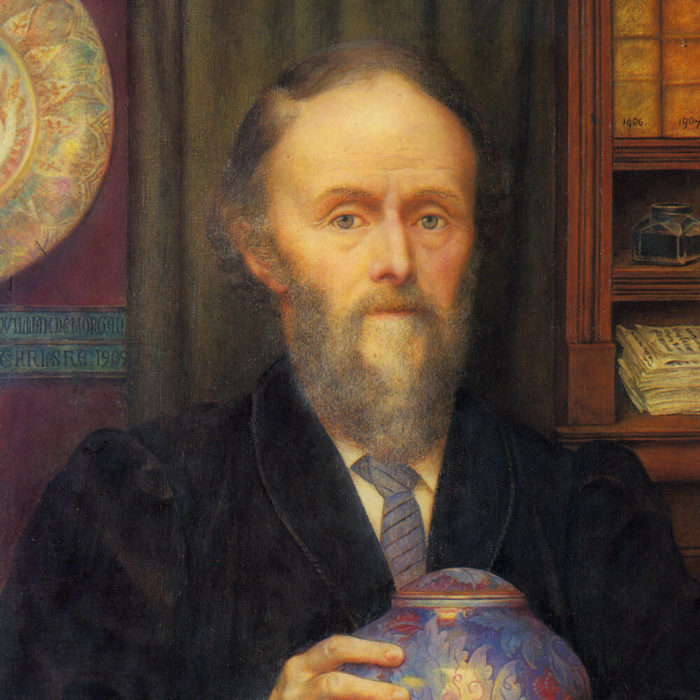
- This event has passed.

Ether and Alternative Geometries in Evelyn De Morgan’s Paintings c. 1909
26th October 2020 @ 5:00 pm - 7:00 pm
Emma Merkling, Courtauld Institute
26 October 2020
Emma Merkling is a PhD candidate in History of Art at the Courtauld Institute of Art, supervised by Professor Caroline Arscott. Emma’s research explores the deployment in Victorian art of the imagery, language, and frameworks of late nineteenth-century science, with a particular focus on queer and women artists and heterodox belief systems such as Spiritualism and Theosophy. Their doctoral
dissertation looks at Evelyn De Morgan’s art between 1883 and 1919 and the impact thereon of developments in physics, mathematics, and philosophy of science. Emma received a BA in Art History and Archaeology from Columbia University in 2015, and an MA in History of Art from the Courtauld in 2017.
Self as Boundless Surface: Ether and Alternative Geometries in Evelyn De Morgan’s Paintings c. 1909
In late nineteenth- and early twentieth-century Britain, certain physicists and experimental psychologists sympathetic to spiritualism — notably Oliver Lodge and Frederic W. H. Myers — published a number of popular books attending to the nature, location, and constitution of the self. Myers argued that the self was composite or colonial rather than monadic, unified by an indwelling soul; in his view, consciousness was a spectrum, co-extensive with the material body but also extending beyond it. Lodge, in turn, focused on the mechanism and physical location of this self, arguing that it inhered not in the material body but an ‘etherial’ one, embedded in the imponderable ether understood by Victorian physics to invisibly fill all space. Both Lodge and Myers insisted that this self, because independent of the corporeal frame, could survive physical death and endure eternally.
This vision of the self as embodied yet immortal was attractive to spiritualists like painter Evelyn De Morgan (1855–1919), though its imponderability rendered it troublesome to visualise. This paper explores her creative approach to this representational challenge in a few paintings that attend to issues of the soul and psychical energy; most notably, Moonbeams Dipping into the Sea (c. 1905–10) and William De Morgan Holding a Vase (1909), created shortly after the publications by Myers and Lodge. In these works, I argue, De Morgan summons the self to the threshold of visibility in a register that owes much to the properties of ether and the alternative geometries of her day, which treated space as mobile, mutable, and imponderable — yet also mappable. I attend especially to questions of surface and edge, cohesion and dispersal, and in the process mobilise the theories of Gilles Deleuze on faciality, Figure, and the diagram as a productive framework for discussing De Morgan’s representational strategies.

